Smart home automation has become synonymous with modern living, offering a plethora of possibilities to enhance our homes. From adjusting the thermostat to turning off lights remotely, these apps use IoT to connect devices to build a connected home environment.
The increasing demand for AI-powered smart home apps is enhancing the quality of life by offering automation, energy efficiency, and enhanced security through customizable interfaces and advanced features.
In 2022, the global smart home market was valued at USD 80.45 billion, and it is projected to reach approximately USD 581.85 billion by 2032, with a compound annual growth rate (CAGR) of 21.88% from 2023 to 2032.
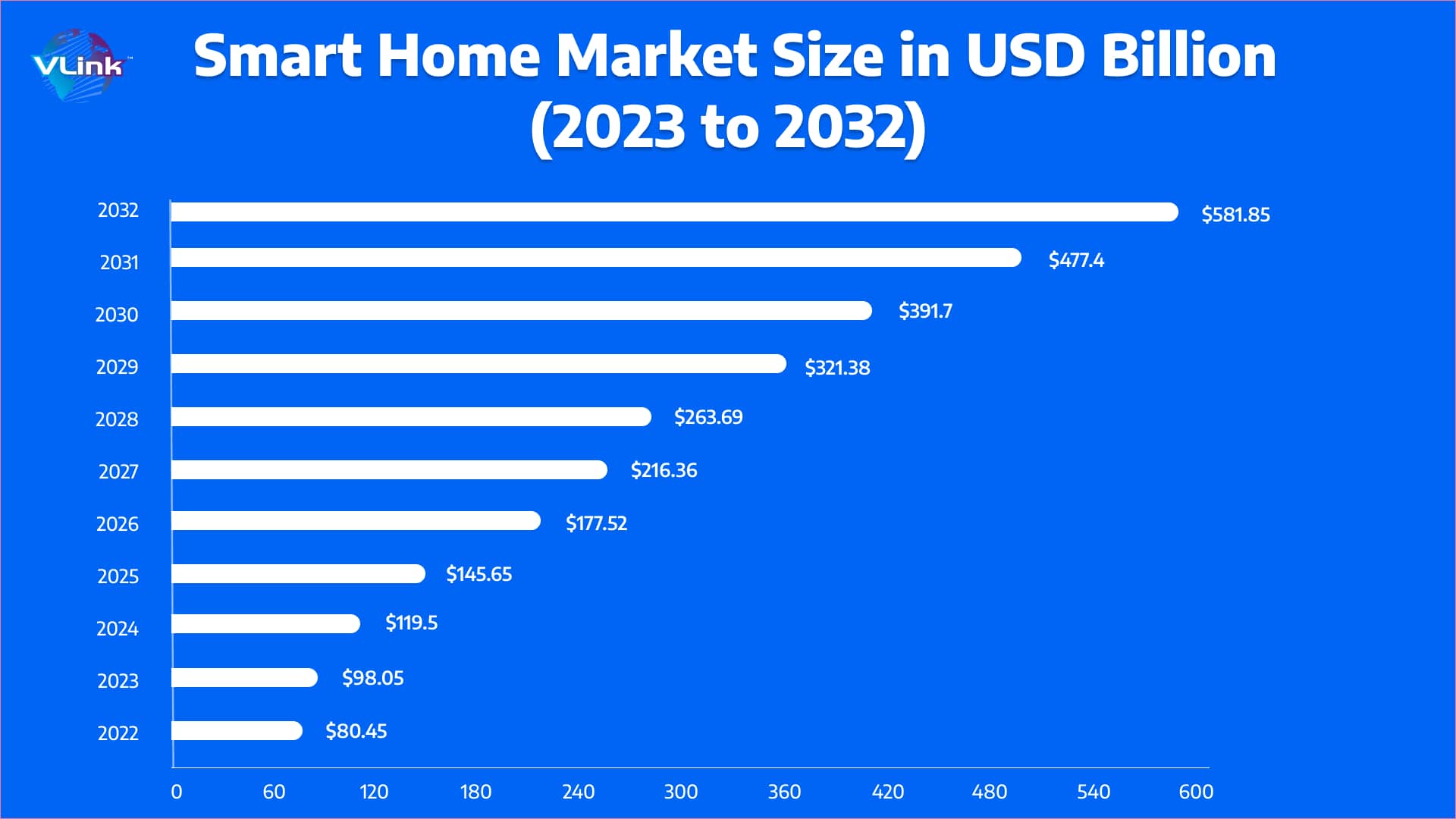
With this expanding demand, there are burgeoning opportunities within the smart home industry.
If you are planning to build a smart home app, the first question that pops up in your mind is: "How much does smart home automation app development cost?"
In this blog, we will explore the cost, features, steps, and use cases of smart home automation apps:
Incredible Stats of Smart Home Automation App Development
Here are a few incredible stats on smart home automation app development:
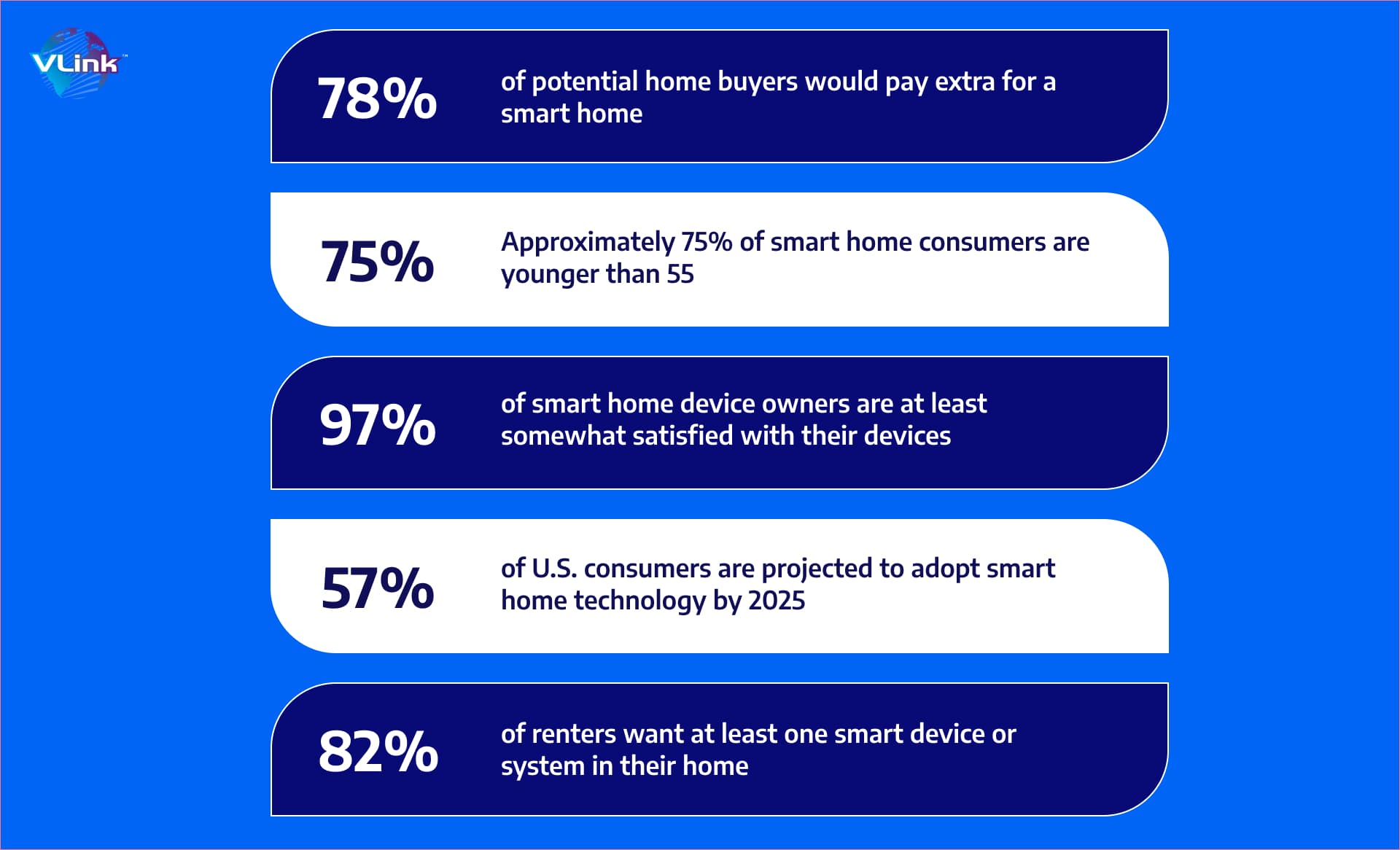
Factors Affecting Smart Home Automation App Development Cost
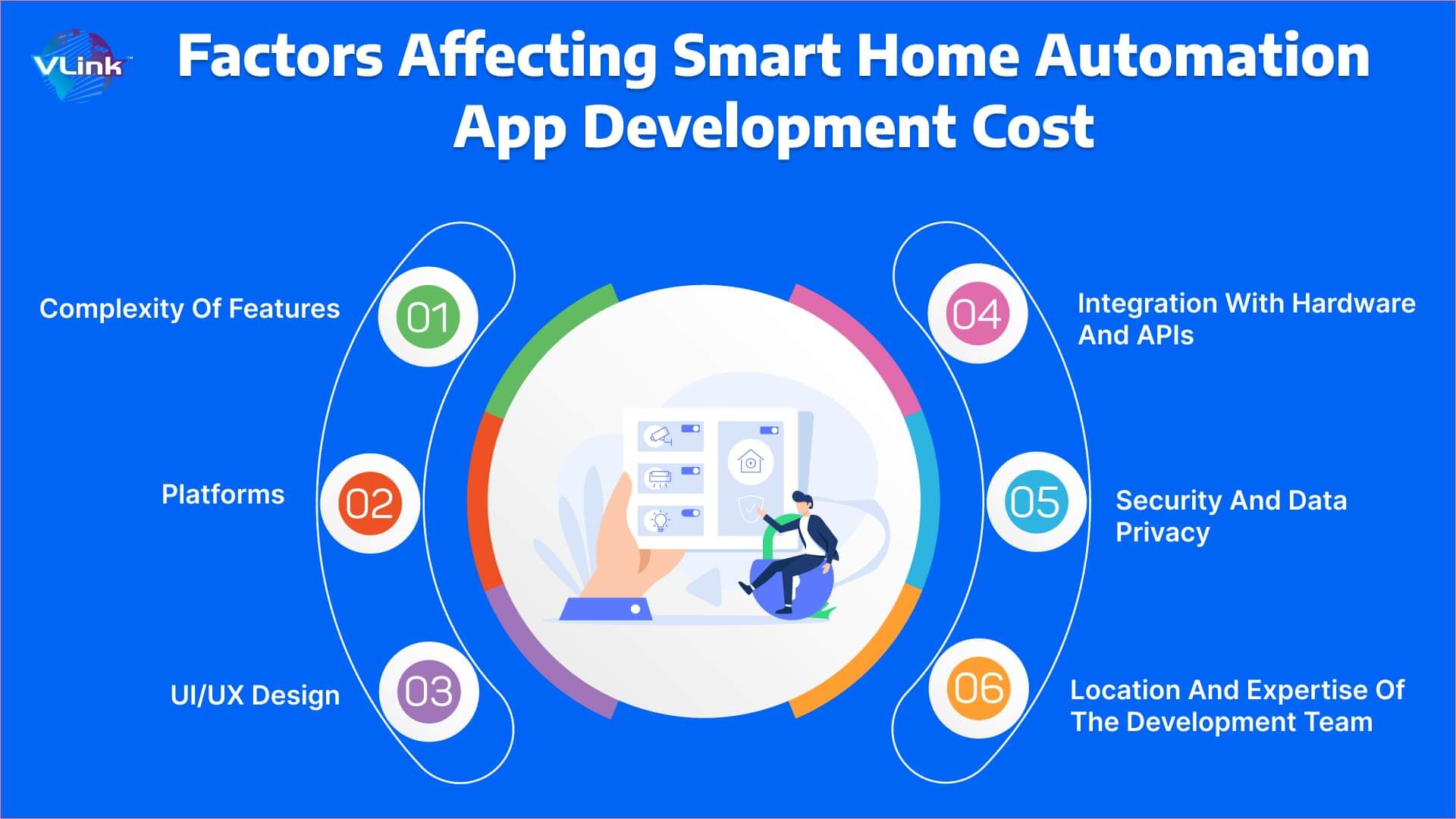
Complexity of Features
The cost of developing a smart home automation app will be notably influenced by the complexity and number of features you aim to incorporate. Basic functionalities such as device control and scheduling may be more economical with advanced features like voice control, geolocation, or integration with third-party services.
Platforms
The expenses of building a smart home automation app can vary depending on whether you choose to cater to iOS, Android, or both platforms. In addition, app development costs might increase as additional integration efforts are necessary for compatibility with various smart home devices and protocols, such as Wi-Fi, Zigbee, or Z-Wave.
UI/UX Design
Attention to detail plays a crucial role in crafting an intuitive and visually enticing UI/UX design. The intricacy of design and the inclusion of distinctive animations, graphics, or branding elements can influence the smart home automation app development cost.
If you aspire to have a design that is distinctive and captivates your audience, it's advisable to invest in premium UI/UX design components.
Integration with Hardware and APIs
Incorporating your app with particular smart home devices can pose a formidable challenge. If you engage with their hardware and APIs, the design process may demand additional time and effort. Concerns related to compatibility and interoperability can further amplify the intricacy and project costs. With the correct approach and expertise, these challenges can be effectively addressed.
Security and Data Privacy
Smart home app development costs entails handling sensitive data and implementing robust security measures. The expenses associated with building a smart home automation app may rise due to the implementation of stringent security protocols and adherence to data protection laws.
Location and Expertise of the Development Team
The geographic location and level of experience of the development team can influence the cost of building a smart home automation app. Rates may differ depending on the team's location.
So, the overall expense for developing a smart home automation app can fall within the range of US$20,000 to US$150,000, depending upon the features and intricacies of the application.
Engaging in a conversation about your specific requirements with a smart home app development firm such as VLink will enable you to receive a more accurate estimate of the associated costs. It ensures the delivery of a customized solution that aligns with your distinct needs.
Key Features of Smart Home Automation App Development
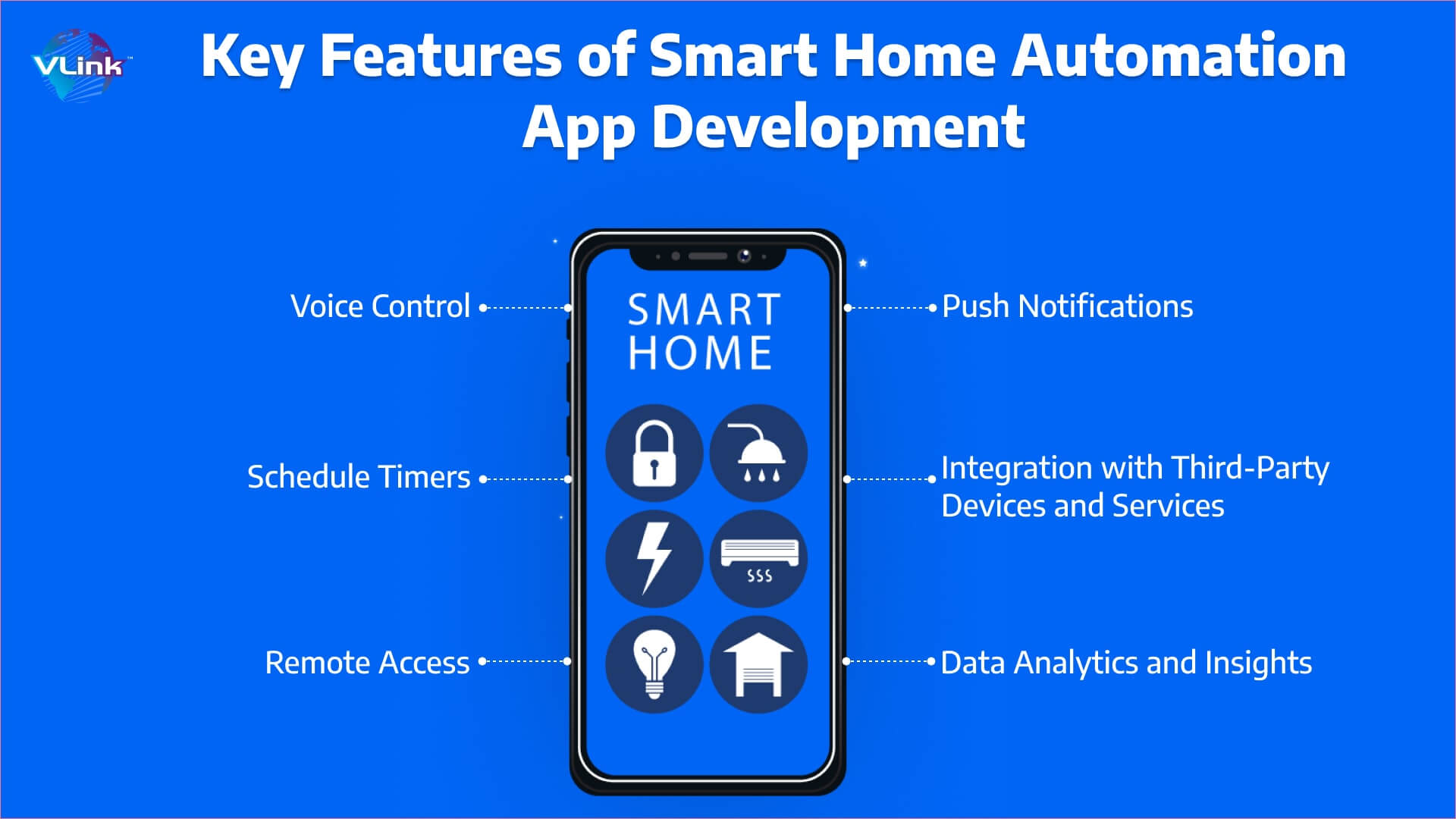
Enabling integration with AI personal assistant app development such as Apple Siri, Google Assistant, or Amazon Alexa facilitates the use of voice commands for controlling devices.
Users can establish schedules and timers for automated operations, such as toggling lights on and off or adjusting settings at specific times.
With remote access, users can oversee and control their smart home components from any location using a smartphone device.
Customizable push notifications improve engagement and revenue as well as empowering users to tailor sound, appearance, and urgency preferences, providing them with updates on the status of appliances and the overall household. Users should have the ability to fine-tune all notification settings, allowing them to discern between essential and non-essential alerts.
Leveraging third-party integrations enhances the functionality and adaptability of a smart home automation application.
This feature facilitates seamless control and automation across various brands by ensuring compatibility and integration with several smart home platforms and devices.
Users can retrieve information regarding their own smart home devices, including details on energy usage, usage trends, and optimization suggestions.
The availability of these functionalities may vary depending on the specific smart home automation application and the supported devices. It is recommended to review the features and compatibility of an application before deciding through data analytics services.
Now that you have understood the top features let's move on to the smart home automation app development guide.
Step-by-Step Guide to Build a Smart Home Automation App
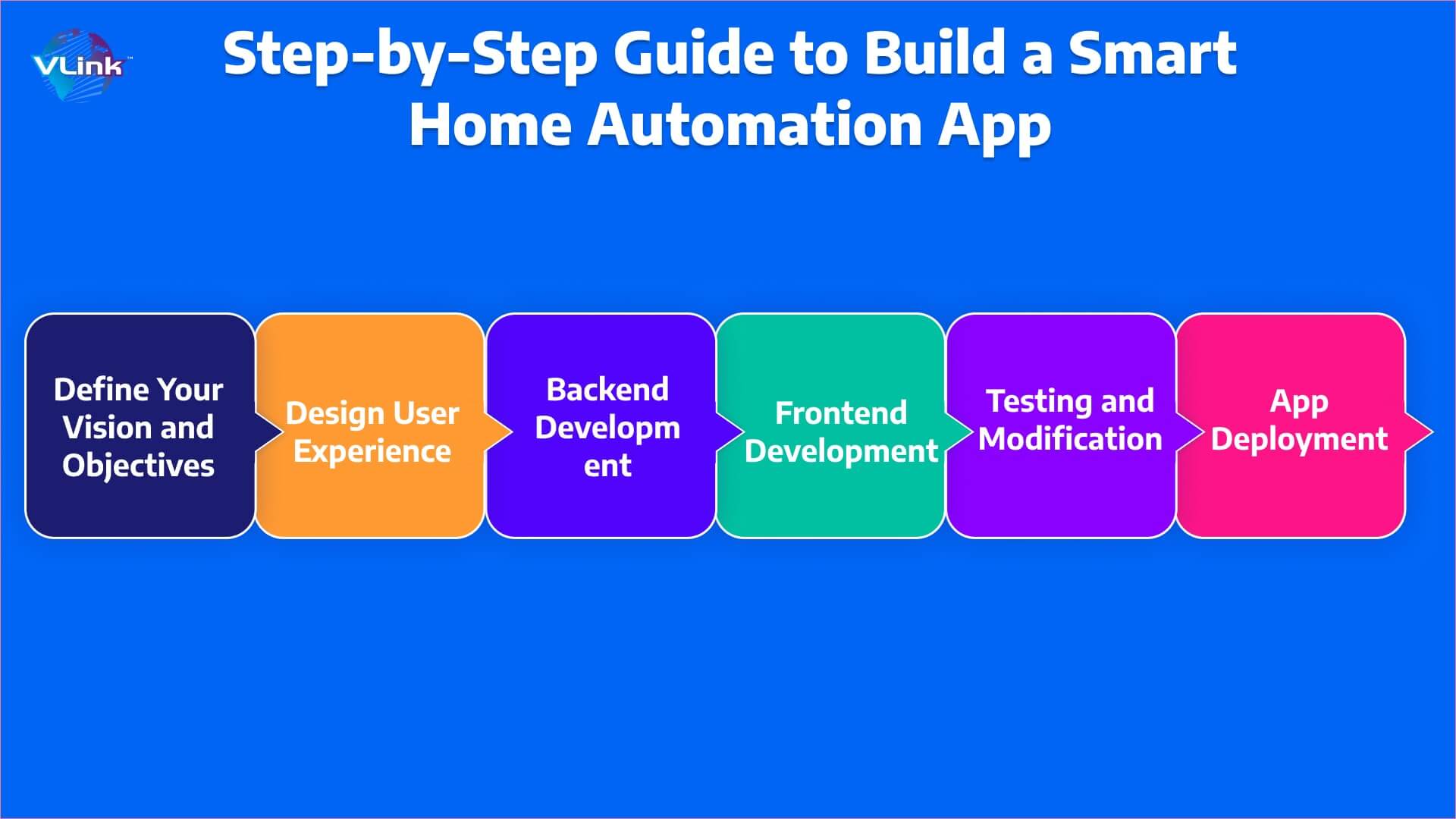
Initiating the development of a smart home automation app begins with delving into your vision. Conduct thorough market research to identify competitors, understand the operations of established smart home apps, and assess their strengths and weaknesses.
By clearly defining the app's purpose and features, you gain insights into the distinctive and essential aspects that will set it apart.
User-friendly design is essential for smart home apps to ensure effortless navigation and control. A visually appealing interface not only boosts user engagement but also creates a sense of comfort and delight.
Craft wireframes and mockups to visualize the app's structure, navigation flow, and element placement. Develop prototypes to test and collect feedback on the usability of the user interface. Ultimately, this process allows for design adjustments based on user input.
A smart home automation app development, a robust backend is indispensable to support all aspects of app functionality. Our dedicated team of developers establish essential APIs, databases, and servers to guarantee a smooth and seamless user experience. The architecture of the backend is pivotal in determining the app's scalability, speed, and reliability.
The front end provides users with a seamless interactive app experience. Our fronend developers, who are dedicated to your project, prioritize writing well-structured, well-commented, and optimized code. Their focus is on ensuring users can easily access and utilize features such as device control, automation, scheduling, and data monitoring.
Before delivering the app to the client, our team of QA software and Testing Engineers rigorously assesses the application. Their role involves identifying and addressing bugs and errors to guarantee the smooth functioning of the app.
Once the app undergoes testing for user experience, functions, and features, it is prepared for deployment. We ensure timely deployment of your app according to the set deadline and remain available for any post-deployment support you may require.
Top Use Cases of Smart Home Automation App
Smart home automation mobile app development solutions is essential for various purposes mentioned in the image below:
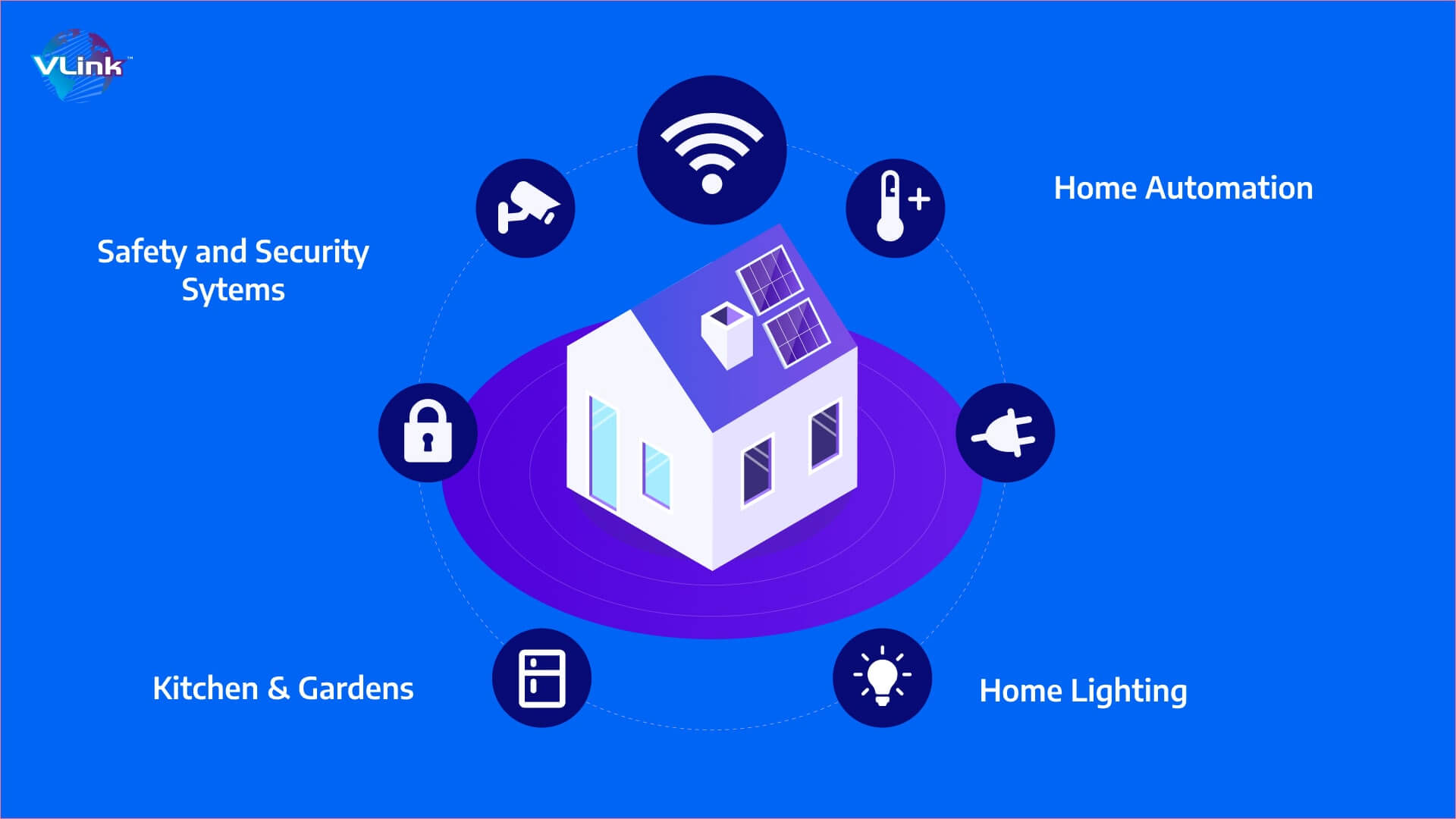
Create a Successful Smart Home App with VLink!
Want to create a smart home mobile app? Hire VLink as your reliable IoT app development service partner. With us, you can turn any home into a bright, networked ecosystem that allows people to manage their devices and improve their quality.
At VLink, we recognize the significance of such applications and boast a team of skilled smart home app developer's adept at creating robust mobile apps across diverse industry verticals. Our established track record reflects extensive experience with clients ranging from startups to enterprises and Fortune 500 brands.
Contact our experts for a comprehensive estimate on smart home app development pricing!
Frequently Asked Questions
Developing a smart home automation app may face challenges such as integrating diverse devices, ensuring robust security, managing complex user interfaces, addressing compatibility issues, and staying abreast of evolving technologies. Balancing these aspects requires careful planning, expertise, and adaptability to create a seamless and reliable user experience.
A smart home automation app allows users to control and monitor connected devices in their homes remotely. It typically functions by connecting to smart devices through Wi-Fi or other communication protocols, enabling users to manage lights, thermostats, security systems, and more via a centralized app, providing convenience and efficiency in home management.
Smart home automation apps can be categorized into control apps, which manage devices individually or collectively; monitoring apps, providing real-time information on device status; and automation apps, allowing users to create customized scenarios for device interaction, such as scheduling and triggering actions based on specific conditions or events.








